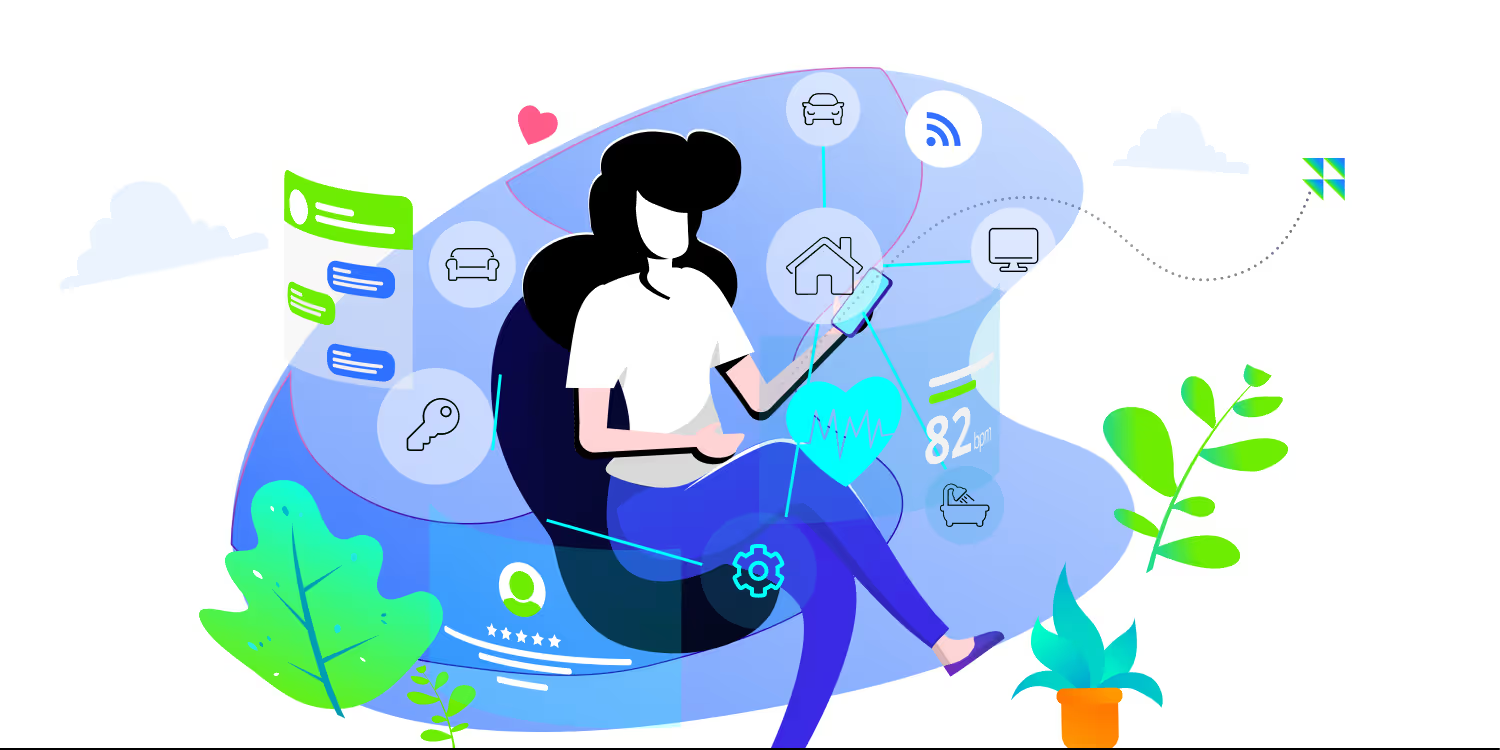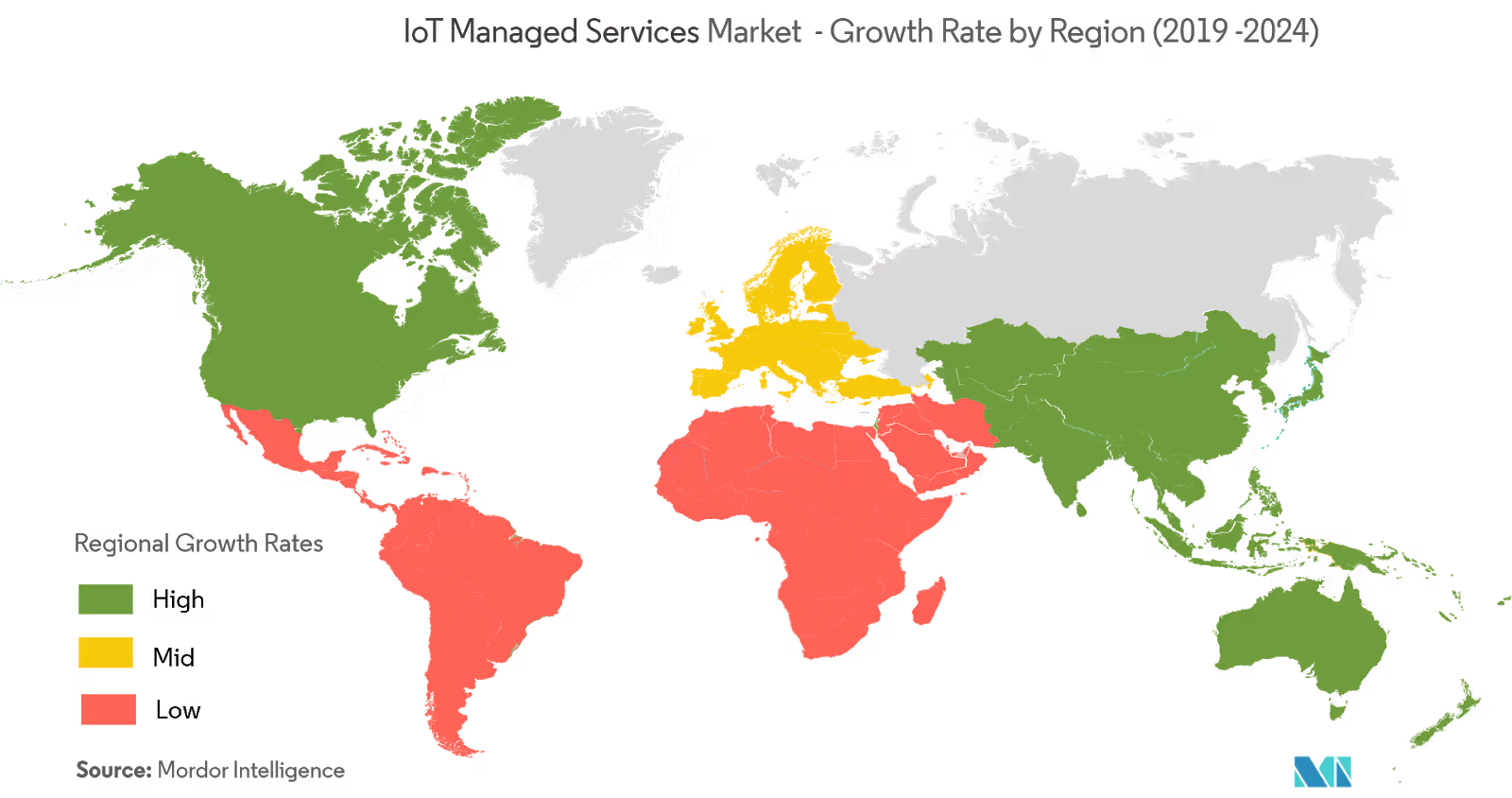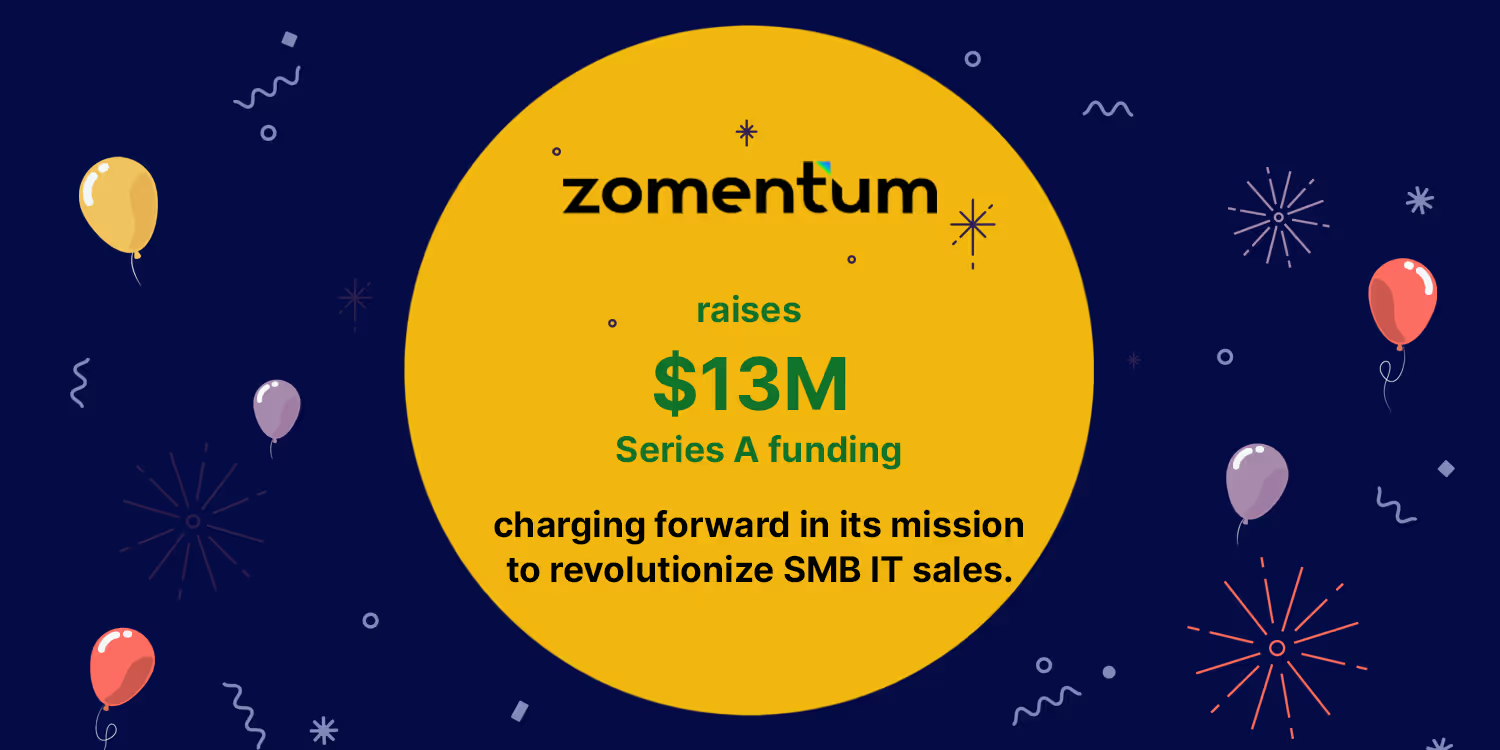MSPs: Time to Seize the IoT change

In today’s world, a buzz is excitedly created when any new technology comes in light. Experts talk about the various aspects of the contemporary invention, assess their uses cases and develop strategies to deal or mend workflows with it.
Such is the invention of IoT these days! And the MSPs are already analyzing the future and use cases of IoT so that they can mend their processes and mechanisms for efficient and responsive output.
What is IoT?
IoT or Internet of Things could be anything from a wristband that manages your home’s climate, stereo, security system with the click of a finger to a system that can turn your cabinets and appliances into ‘smart things’.
And the newest feature is that - all these devices are a part of IoT, connected with each other which can directly communicate and sync with one another into the cloud. They can be simply connected to your personal smartphone, tablet or computer.
Where does an MSP fit in?
MSPs can help with almost everything in laying an IoT network from planning, procuring hardware and software, building architectures, and managing the networks. The job of an MSP is long-termed and hence has been important to enterprise partners for decades, providing connectivity, security and cloud computing technologies.
However, with the inception of a comprehensive IoT environment, MSPs need an enhancement in ways they ideate and strategize their processes and operations.
Why does MSPs need an upgrade?
It is because, the more the number of devices are connected or used to perform a particular task, the more the generation of data. And as we all know that data is everything; maintaining, managing and monitoring the data is equally important. Therefore, the demand for managed service providers is estimated to be on the rise.
The IoT managed service market is expected to grow at 15.3% annual compound growth rate till 2022.

How is IoT transforming the industry for MSPs?
IoT’s influence is strongly felt by the MSPs - in terms of industry and infrastructure. The connectivity of devices such as the Wi-Fi and washing machine (or anything possible) seemingly coerces the MSPs to pay attention to the emerging trends in the Internet of Things.
MSPs are expected to remain organized and get over with the use of single servers because businesses which never seemed intertwined, might be related/connected with IoT. In short, the emergence of IoT is expected to make things complex for the existing MSPs.
To be specific about the impact of IoT on IT, read through the points below to get a better understanding,
- Analysis of IoT device data: While most MSPs will be able to manage and monitor the IoT devices, the managed service providers that can provide a better analysis of the data collected, will stand out.
- Requirement of new expertise: IoT devices lack the plug and play feature like the desktop operating systems, therefore, the MSPs have to bring in new expertise in managing and automating the entire IoT system.
- Decision making is a complex task: Implementing IoT applications is more complex than any traditional IT infrastructure for an MSP. And the major contributor is the type and number of individuals involved in the decision making process in an organization.
- Investment: The MSPs will require significant investments in asset management, data analytics, and staff recruitment and retention, thus, increasing the investment cap and output.
How can MSPs coin opportunities for a safer implementation of IoT environment?
What exactly MSPs can create for revenue generation is only a guess at this time! However, they can evolve as per the IoT environment to improve and earn their stance. Certain challenges which MSPs can overcome and use the opportunity to create history are,
- PSA and RMM tools aren’t designed for IoT devices, yet: The MSPs should emphasize on creating IoT focused monitoring platforms before IoT integrations with Professional Service Automation (PSA) and Remote Monitoring and Management (RMM) are readily available.
- Data center management is a concern: The MSPs should focus on ideating a concept such as DMaaS (Data Centre Management as a Service). This would provide better visibility and analytics-based insights into hybrid and physical environments to maximize performance.
- Latency to connect to cloud environment and process data is an obstacle: As IoT implementations rise, small computer rooms with closets containing infrastructure to run IoT applications are starting to appear at the edge of a network. The edge sites are supposed to be reliable, available and secure- which needs an MSP expertise.
- Telecommunication providers ambition to provide managed services: With the implementation of smartphones in the IoT environment, the telecom industry is interested in providing managed services for all. MSPs should decide to provide networking and application services of their own or act as agent for the carriers providing the services.
- IoT devices can be hacked in minutes: But take weeks or months to recover. And the greatest and easiest IoT threat is printer security. Printers are simplified PCs which can print. They can neither encrypt or decrypt data and are always connected to the internet. So, the MSPs must focus on the security aspect in an IoT environment and follow certain guidelines which would make the network hack-proof.
Examples of IoT platforms (or IoT examples) that revolutionized major industries?
- Healthcare: The smart medical devices or the Internet of Medical Things (IoMT) focuses on improving the well being of people. The topmost devices which are pushing the IoMT adoption are remote health monitoring devices and mobile apps, wearable devices, patient-centric care and big data. The real-time monitoring of patients with connected sensors can understand the changes in a human’s body.
Apart from reporting imminent problems like an asthma attack or heart failure, the IoT devices collect healthcare data such as blood pressure, sugar levels, oxygen, fatigue, appetite, weight and so on.
The data is stored in a ‘diary’ for personalized analysis and tailor-made strategies for preventing or combating the ailments.
- Retail: Using IoT devices, customers can connect their smartphones to track their path through the store and navigate to areas with desired or premium products, avoiding the high traffic areas.
IoT barcode readers could be incorporated into carts and billing processes. Customers can add or drop products as per their choices, which will directly ease the process of inventory management.
Also, this process can be used to connect with users directly for personalized feedback.
- Farming: IoT can be considered the greatest invention in agriculture and is also expected to grow by 20%, reaching 75 million devices by 2020.
With IoT technology in place, farmers can monitor and manage the livestock which includes checking of the health and location of the animals. Having all necessary information about the livestock (such as diseases, sickness, vaccinations, etc.) will help the farmers make informed decisions.
The IoT systems can also detect any disease or insect infestation in plants or crops including water shortages and adverse weather changes. And of course, the devices are a blessing to farmers because of their capability to check and read the soil’s composition, moisture and nutrient levels for a better and successful harvest.
- Manufacturing: This is a sector which can use the bliss of IoT to the fullest. The devices can track and trace the inventories on a global scale. The IoT devices are also capable in providing information regarding the undergoing work, equipment collection, and delivery details.
With the inception of IoT in manufacturing, the custom of manual documentation can be scrapped. You can have a cross channel visibility into multiple departments and help stakeholders understand your ongoing work better. You can foresee and strategize for any ad hoc challenges better and outline enhanced policies.
- Software: With the concept of IoT in mind, Amazon has created an AWS IoT (Amazon Web Services) platform. The platform lets you connect the IoT devices to the cloud very easily and interact securely. The platform collects and measures data, analyses it and transmits it to the cloud for further actions. Once the devices are connected to the cloud platform, you can easily operate and manage all your solutions through the AWS console.
IoT startups are now choosing AWS IoT because of its features and easy-to-use connectivity. In fact, most of the engineers like the platform as it is compatible with almost all popular programming languages like C, Java, Javascript, Python, SDK, and mobile SDKs - iOS and Android.
To read more about the AWS IoT, click on the link here.
Two of the most preferred trends which can work wonders with IoT are,
- Artificial intelligence: A buzzword today, AI along with deep learning, natural language processing (NLP), image recognition and neural network driven decision making can connect devices which can speak and understand each other. Unlike the earlier experiences which included a lot of wires and hard coding, AI is now helping automakers and hotels create more integrated experiences to understand and interact with people.
- Blockchain: Blockchain adds immutability and integrity to the millions of transactions taking place between the IoT devices. However, the two technologies have never been converged and talked about until lately. But IBM is working along with clients in multiple industries to bring these two technologies together and emerge greater trends.
MSPs: Are you ready to face the future?
Understanding the scenario of IoT devices and the upcoming trend of adapting to the cloud, MSPs must soon realize the opportunities which lie ahead. Every data that is stored or the devices which will be used, needs a proper setup and pre-workout which have to be performed/setup by you - the MSPs.
In an IoT environment, processing and analysing massive amounts of data across the network is not feasible. Therefore, such processing will need to occur on IoT gateways deployed at the edge of a network. And the number of internal IT organizations capable of building, deploying and managing such applications on their own is limited. Thus, providing the largest greenfield opportunity to the MSPs in expanding opportunities and applications.

Challenges which the new era might bestow?
The gigantic weakness is authentication. And the second factor is security.
With very little security and authentication process at the beginning, any device which discovers an IoT environment can easily connect and gain unauthorized access to the data. As an MSP, here are five tips which you can use to create a better and organized IoT environment dodging all disadvantages,
- Authentication: Implement two-factor authentication along with stronger passwords.
- Avoid overuse: Let the IoT devices be used only when necessary to avoid creation of attack surfaces.
- Proper controls: Do not let alarms and readings overwhelm with noise. Instead give controls to the right people to run the environment safely and efficiently.
- Physical safety: Ensure that access to critical controls and IoT devices are restricted in an environment.
- Revenue planning: Ensure that your revenue plan is as per the number of devices which should/might be on the IoT network and not as per the number of users.
Sometimes, a single user can have more than one device in a network, therefore, raising unauthorized security concerns. Therefore, design your revenue plan as per the number of devices so that, as an MSP you would have total control of all the connected devices. Hence, ensuring better security in the environment.
- Data storage: Contemplate ideas and strategies to transmit and archive data in compliance with applicable regulations.
Since a single server would not suffice, a technology with advanced data storage capacity or trend must be thought of.
What is the revenue opportunity of an MSP for IoT?
26 billion devices are estimated to be connected to the internet by 2020. And this is more than the number of people on Earth (7.8 billion as of today)!
Today, an organization is billed on the number of users connected to the network and it is very difficult for an MSP to manage all the unauthorized devices in the network. In addition, most of the small and medium sized businesses do not have in-house resources to manage their IT, thus allowing their network to be prone to unnecessary accesses and requests.
So, do you see the revenue opportunity here MSPs?
In order to eradicate the problem in an IoT environment, twist your revenue model based on the number of devices in the network, instead of the number of users connected. You can have a monthly, quarterly, half yearly or yearly billing cycle. And every device on the network in the billing cycle is approved and no other devices can be connected on an ad hoc basis without permission or tweaking the subscription.
With this practice, you can achieve,
- More revenue. As the number of devices connected to the network is always greater than the number of users.
- Enhanced security. When every device connected to the network is acknowledged, there will be reduced susceptibility to unauthorized devices.
Takeaways
Very soon IoT will be a generic term used by people in their day-to-day activities. And it's hardly anytime for an IoT environment to be ubiquitous and integrated part of our lives. As we are already on course to have an extremely connected world, the outline and support for creating a trend needs to be stronger. As our systems become integrated with payment, transport and entertainment systems, IoT is seen to be the backbone of this entire structure while MSPs would be the foundation.
Therefore, organizations which can provide a seamless integrated solution to the human needs will be the ones to succeed in creating Industry 4.0 and beyond.
Interested in learning more about our product's features and benefits? Schedule a demo and we'll walk you through everything.
Suggested Blogs

What’s new in Zomentum - December 2019
.avif)
Zomentum Announces the Top Influential Partners of 2023: Leading the Way in Growth and Innovation

